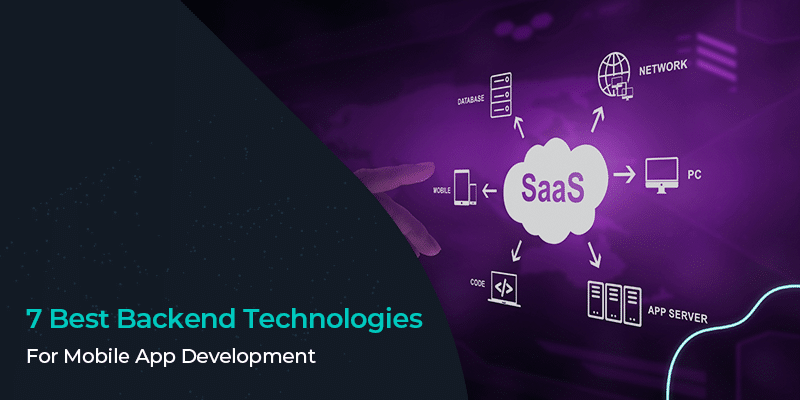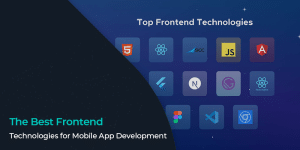Introduction
Mobile applications rely on the backend infrastructure as their core structure to deliver proper performance together with database management and smooth user interaction. A mobile application’s backend selection determines its scale of growth together with security measures and development processing speed.
Developers experience difficulties when searching for the right solution among the many available options. Building an app that spans from simple to enterprise level requires backend framework implementation which determines the success of your development.
List Of The Best Backend Technologies Needed For App Development
Node.js
The JavaScript runtime named Node.js operates through the V8 engine from Chrome to help programmers develop quick and expandable applications. Effective backend development requires Node.js to execute non-blocking event-driven operations.
Key Features:
- Uses asynchronous events to handle multiple simultaneous requests effectively.
- Lightweight and efficient, making it ideal for scalable applications.
- Operates across multiple platforms like Windows, and macOS along with Linux systems.
Django
The high-level Python-based web framework Django implements Model-View-Template (MVT) architecture to operate. This platform is used by any premium app agency because it prioritizes security together with rapid development and scalability as such traits suit large-scale applications.
Key Features:
- Native security features protect against SQL injection attacks and XSS assaults.
- Rapid app development capabilities with reusable components and an MVT architecture.
- Scalable and SEO-friendly, making it suitable for data-driven applications.
Ruby on Rails
Ruby on Rails (RoR) functions as a dynamic web application framework that emphasizes ease of development and productivity for framework users. The Ruby programming language drives its operation yet its Convention over Configuration principle cuts down mobile app development hours.
Key Features:
- The convention over configuration coding philosophy enables app developers to create code without repetitive tasks.
- Sleek development and maintenance processes result from automated testing.
- Integrated database management with Active Record ORM for efficient data handling.
Firebase
Firebase operates as a Backend-as-a-Service (BaaS) from Google to generate real-time database and authentication capabilities and cloud storage functionalities. Most UK Developers can create serverless applications without having to handle infrastructure management through this system.
Key Features:
- A real-time NoSQL cloud database that performs instant updates for shared device data.
- The authentication system uses social logins and email along with phone authentication.
- Serverless backend services reduce the complexity associated with managing infrastructure.
Spring Boot
Spring Boot serves as a Java-based framework that makes enterprise application development simpler through its microservices-oriented framework design. The framework contains pre-installed dependency management with security features that will allow any app development company to work on app business logic smartly.
Key Features:
- Embedded servers eliminate the need for external web servers for deployment.
- The microservice architecture allows developers to build modular applications with scalability features.
- Enterprise-grade security with authentication, authorization, and encryption features.
ASP.NET Core
The modern open-source framework ASP.NET Core serves Microsoft-backed tools that enable developers to build web applications along with APIs. The framework enables deployment across different platforms including Windows through Linux up to macOS.
Key Features:
- Developers can create powerful cloud-based applications with an add-on feature set.
- Integrated security capabilities that enable identity management and data protection.
- Integration for the entire Microsoft platform which includes Azure and Microsoft SQL Server.
Laravel
Developers use Laravel PHP framework which presents an elegant syntax and secure features plus developer-friendly utilities. The framework simplifies backend development because it includes authentication tools as well as templating and database features in one package.
Key Features:
- Structured and maintainable code from MVC architecture together with the Blade templating engine.
- Built-in authentication along with user management processes and role-based access control.
- Database migration and ORM support with Eloquent for efficient database interactions.
How To Choose The Right Backend Technology For Your App
- Project Requirements: The first step decides whether your application needs real-time processing together with scalability features combined with high-security requirements. Select a backend system that supports your functional requirements and data storage needs.
- Developer Expertise: Developer expertise requires selecting a framework that matches team skills to enable accelerated development times. The most common selection for JavaScript works with Node.js while the preferred framework for Python programmers relies on Django.
- Scalability Needs: Select cloud-native solutions such as Firebase or scalable frameworks like Spring Boot for handling expected growth. Applications with microservices-based architecture enable better flexibility when users want to expand their systems.
- Budget Considerations: The reliance on Firebase managed services can become a cost burden because expansion requires increased financial investment. Self-hosted options like Django or Express.js offer better cost control with open-source flexibility.
- Community and Support: A developer community with excellent strength provides enhanced resources together with troubleshooting solutions and product updates for better development services. These modern technologies enjoy active support from their communities.
Conclusion
Backing up your mobile app with suitable backend technology either enhances or degrades its operational quality and customer interaction. Your decision will determine how you develop your application so make your selections carefully.



